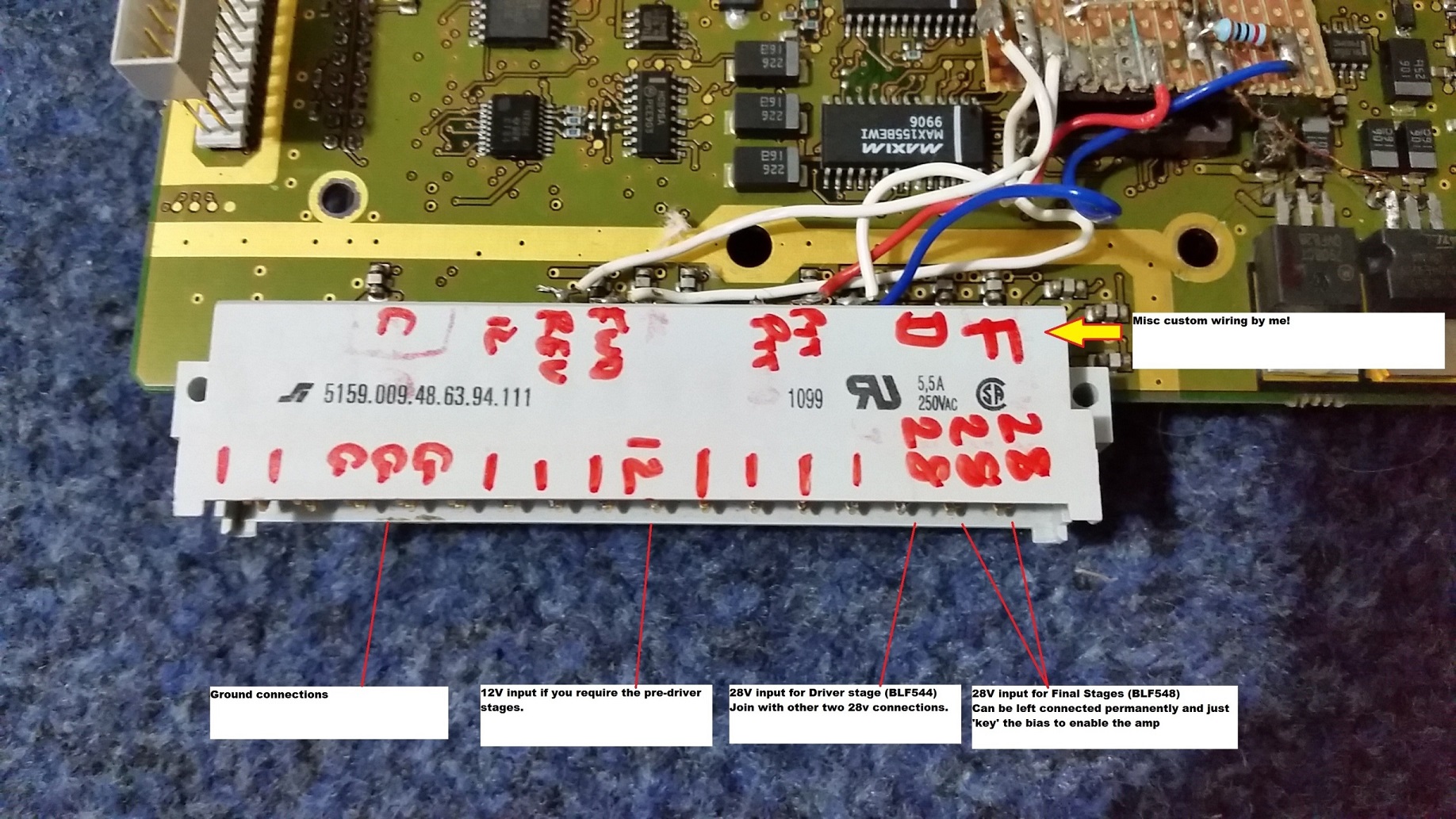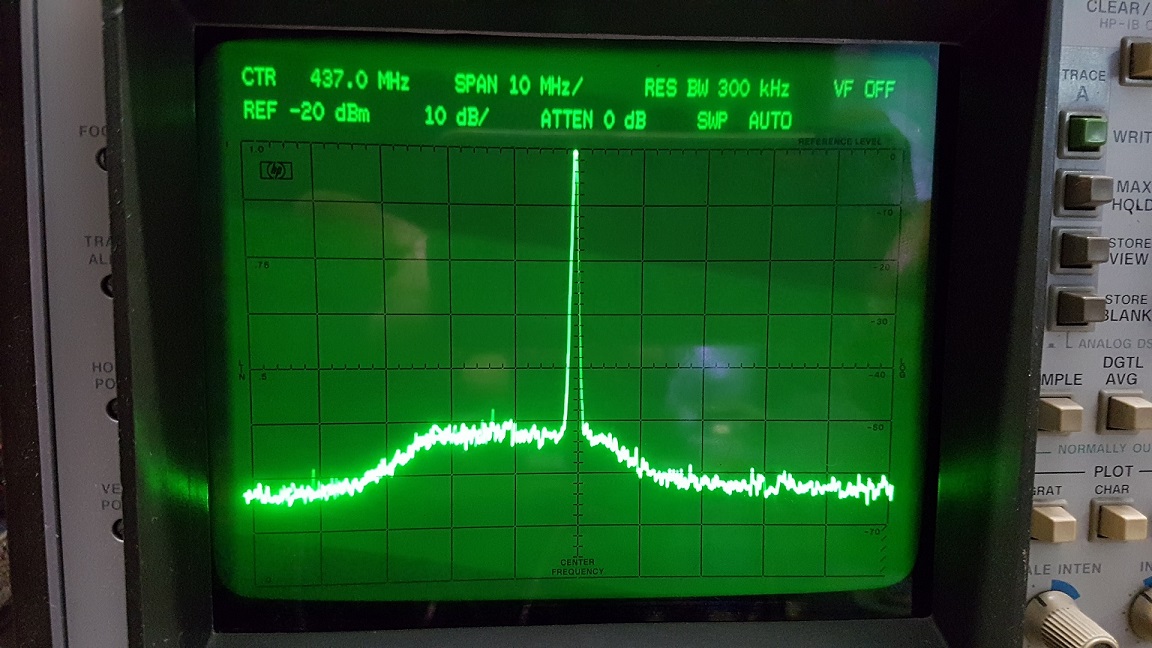
The amplifiers are made by Nokia and are very well built but have lots of components that are not needed by us!
The main idea for getting the amplifier was to use on 70cm SSB but also as an amplifer for 70cm ATV. The amplifier is easy to get into operation and the modifications will be described below.
If you keep a look out at rallies you may just come across one for
Watts for pound it is a very good buy compared with the Microwave Modules amplifiers that generate only around 80W and are very poor for DATV. These Nokia amps need very little modification to get them up and running. The performance is very good without any RF modifications.
All that is needed is a 28V and optionally a 12V supply for lower than 2W input for power and optionally some changeover relays for Rx/Tx switching.
Input drive level can either be about -18dBm for 50W(corrected) of DATV or about 2watts for ~200W output on SSB depending on where you feed the RF into, I will describe both options below.
Inside the unit there are three main parts, the DSP/Control board, Synthesizer, and RX/TX board. The DSP/Control board can be discarded as we will not be using this very complicated board. The Synthesizer board can also be removed to create some space but notice there are some nice parts you could use from it for other projects...
"On the boards there are three receive converters which are around 380MHz these have a 2nd IF of 470KHz looking at the filters and 45MHz 1st IF.
It has a MiniCircuits IQ Modulator for 70cm which I may use at some point for the Digital ATV input but the IQ input opamp circuit as standard is only designed for very low bandwidth input signals of probably <100KHz so for now i will stick with the current modulator.
You could probably directly modulate it with G3PLXs sound card IQ Transmitter software and get good results for ssb...
The rear of the RF board has some more control circuitry which you can forget about as we will be bypassing most of this."
There seems to be lots of goodies on the boards that would not be used if only the amplifier section is required. A/D Converters, D/A Converters, wideband op-amps, 9GHz bipolar transistors etc.. And some nice bandpass filters If you can get them off the board..hi
The first thing you will need to do is some modification to the power supply input, this is available on the white multi way connector at the back of the RF board.
See below for photos. I have cut pins to use for other connections like PTT & Detector. I have used multiple pins for Ground and +28V input as that is where the main current is drawn. There are SWR and Temperature indicators on the board but i have not used them.
The bias to the various stages will need to be controlled through a ptt control line just like any other amplifier, there is nothing complicated here just a couple of transistors are used. If you need a safer TX/RX changeover you should use a sequencer, this is what i normally use:
http://www.ifwtech.co.uk/g3sek/dx-book/sequencer/index.htm
For the Finals and last driver stage you will only need the 28v supply, the bias circuit for these devices requires a ttl control voltage to operate and needs to be 5v for Bias On
The pre-driver 12v stages require a Ground connection for Bias On.
See the photo above for connections to the bias points and what level is required to enable them.
I have left the actual bias levels of the devices as they were to preserve the good linearity of the amplifier for digital signals, it will do no harm to run it like this for SSB.
To connect the the input of the driver stage for 2W driver level you can connect a length of coax to the input of the BLF544, with a dc blocking cap ***very important not to short the gate to ground.
Or you can connect to the input of the pre driver stage (on the underside of the board and then into the BLF521) for -15dBm/-20dBm drive level.
I have connected the other end of the input coax to what was one of the RX input connections on the amplifier, it saves drilling any more holes in the box!. Remember to cut the input connection to the rx circuit on the board or you will find a s/c!
***Use a capacitor at the drive input point as a dc block (about 33pf) otherwise you can cause s/c the gate input and damage the device***
Edited 31/1/2020
Recently i tested the first stage of the receiver path prior to the mixer, the filter is about 30MHz wide and will tune over the 70cm band. Gain ~11dB, noise figure ~4.5dB - ok as a second stage of receive amplification, it may have useful output power too.










